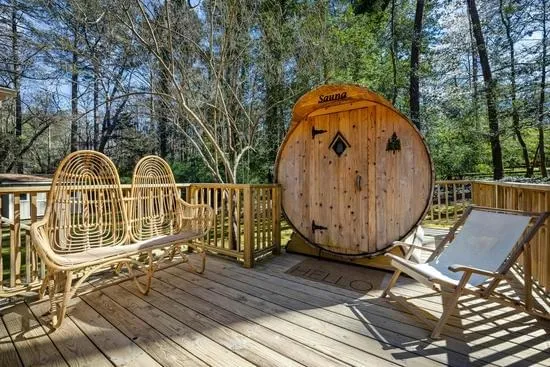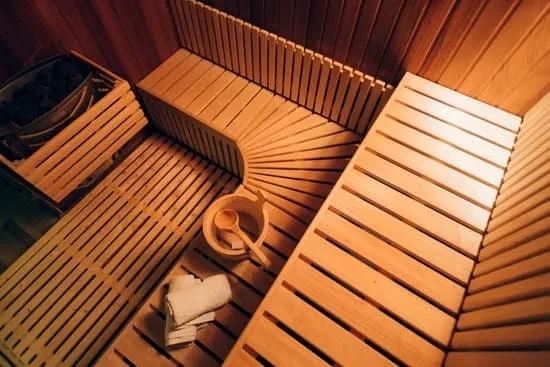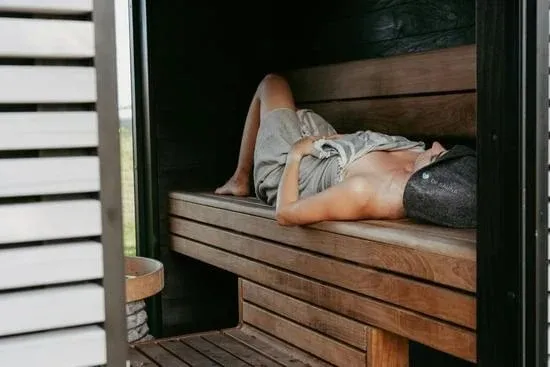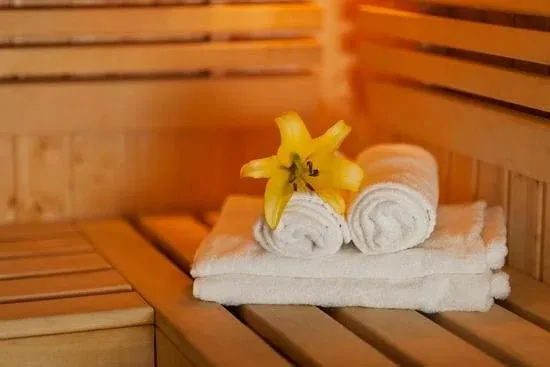Small Space Solutions: Indoor Saunas for Apartments

Living in an apartment or small home doesn't mean you have to give up on the wellness benefits of sauna therapy. I've helped countless apartment dwellers find perfect sauna solutions that fit their space constraints and lifestyle needs. The key is understanding your options and choosing the right type for your situation.
In this comprehensive guide, I'll show you exactly how to bring the sauna experience into your compact living space without major renovations, landlord approval hassles, or breaking the bank.
Why Saunas Work Great in Small Spaces
The wellness revolution has driven innovation in compact sauna design. Modern technology—particularly infrared heating systems—makes it possible to enjoy full sauna benefits in remarkably small footprints.
Benefits of small space saunas include convenience of home access without gym memberships, no commute time, privacy for your wellness routine, cost savings compared to spa visits, and flexibility to use anytime.
Portable Infrared Saunas: The Apartment Dweller's Best Friend
Portable saunas are my top recommendation for renters and anyone with space limitations. These innovative units offer remarkable benefits with minimal commitment.
What is a Portable Sauna?
A portable sauna is a lightweight, collapsible unit that typically features a fabric enclosure, infrared heating panels, a chair or bench, and easy setup/takedown. Most importantly, they require no installation or permanent modifications.
Types of Portable Saunas
Pop-Up Tent Saunas: The most affordable option ($200-$400). These feature a tent-like structure with internal heating panels. Simply unfold, plug in, and you're ready to go. Perfect for extreme budget consciousness, minimal storage space, and occasional use.
Cabin-Style Portable Saunas: Mid-range units ($400-$800) with more structured designs, better insulation, and more powerful heating. They maintain heat more effectively and offer a more comfortable experience. Ideal for regular use, better heat retention, and improved comfort and stability.

Key Advantages
Portable saunas offer zero installation requirements—just unbox and use. They're perfect for renters with no landlord approval needed. Storage is simple as they fold down to fit in closets when not in use. They're lightweight and easy to move between rooms or take when relocating. Cost-effective options start under $300. Standard electrical outlets work fine—no special wiring needed.
Considerations
Your head typically remains outside the unit, which some people prefer for comfort while others miss the full enclosure experience. The fabric construction, while functional, isn't as aesthetically pleasing as wood cabinets. Heat distribution may be less even than cabinet models. They have a shorter lifespan than permanent installations. Weight capacity is typically limited to 250-300 pounds.
"I was skeptical about a portable sauna at first, but after using mine for six months, I'm a complete convert. It fits perfectly in my studio apartment, takes two minutes to set up, and the health benefits are absolutely real." - Apartment dweller testimonial
Compact Cabinet Saunas
If you have a bit more space and budget, compact cabinet saunas offer a more premium experience while still fitting tight quarters.
One-Person Infrared Cabinets
These units (typically 3x4 feet) provide a full sauna experience in minimal space. Price range: $1,500-$3,000. Features include solid wood construction, carbon or ceramic heaters, digital controls with timer, chromotherapy lighting, and sometimes built-in sound systems.
Best locations in apartments: Bedroom corners (can double as a decorative element), bathroom (if space allows), spare room or office, enclosed balcony or patio (with weather protection).
Installation Considerations
Electrical requirements vary: smaller units (under 1500W) work with standard 120V outlets. Larger units may need 240V—check with building management. Most apartment electrical panels can handle one dedicated 240V circuit.
Weight considerations are important—the unit plus user typically totals 500-700 pounds. Ensure your floor can support this (most can, but check if you're above the first floor). Consider a protective mat under the sauna to distribute weight and protect flooring.
Creative Space Solutions
Where you put your sauna matters as much as which one you choose. Here are proven strategies for maximizing limited space:
Multi-Functional Spaces
Convert a corner of your bedroom into a wellness zone. Use room dividers or curtains to create visual separation. The same space can serve as meditation area, yoga space, or reading nook when the sauna isn't in use.
Walk-in closets can work beautifully. If you have a large closet (rare but they exist), a compact sauna might fit. Ensure adequate ventilation—leave the door partially open during use. This keeps your wellness equipment private and contained.
Bathroom Integration
If your bathroom has space, it's ideal because you're already near water and shower facilities, humidity control exists, flooring is water-resistant, and ventilation is built-in. Even a small bathroom might accommodate a portable unit that you set up for use and store elsewhere after.
Balcony and Patio Options
Enclosed or covered outdoor spaces can work with proper protection. Considerations include weather protection with a weatherproof cover when not in use, electrical access (may need an outdoor-rated extension cord), privacy screening, and temperature considerations (extreme cold affects heating time).
Apartment-Friendly Features to Look For
When shopping for a small-space sauna, prioritize these features:
Easy Setup and Breakdown
Look for tool-free assembly, clear instructions with video tutorials, lightweight components you can handle alone, and quick setup time (30 minutes or less).
Storage-Friendly Design
Best options include collapsible or foldable construction, compact storage dimensions, included storage bags or cases, and modular components that separate easily.
Low Power Requirements
Ideal specifications: 120V compatibility (no special wiring), power consumption under 1500W, and energy-efficient operation.
Noise Level
Important for apartments with thin walls. Look for silent or near-silent heating elements and no fans or noisy components. Infrared heating is naturally quiet.
Landlord and Lease Considerations
Before purchasing, protect yourself with these steps:
Review Your Lease
Check for clauses about alterations and improvements, electrical appliance restrictions, noise regulations, and fire safety requirements.
Communicate with Your Landlord
Even if not required, it's smart to inform your landlord, especially if using 240V outlets. Explain that you're using a portable unit (no permanent changes) and provide specifications (show it's safe and certified). Offer to demonstrate proper use and safety measures.
Safety and Insurance
Verify your renter's insurance covers personal sauna use. Keep all safety certifications (UL, ETL, CE) on file. Follow all manufacturer safety guidelines. Install a smoke detector nearby if one isn't present. Never leave the sauna unattended while heating.
Making the Most of Your Small Space Sauna
Maximize your investment with these tips:
Create a Routine
Schedule regular sessions (3-4 times weekly). Start with 15-20 minutes and gradually increase. Use a journal to track how you feel after sessions. Consistency delivers better results than occasional long sessions. For safety tips as you get started, review our beginner's guide to sauna use.
Optimize Your Environment
Set up near your bathroom for easy showering, keep water bottles within reach, use a small towel to sit on, play calming music or meditate during sessions, and keep the area clean and inviting.
Storage Solutions
For portable units, dedicate a specific storage space (closet shelf, under bed with risers, storage ottoman or bench). Keep accessories together (towels, water bottles, timer). Make setup/breakdown as easy as possible to encourage regular use.
Cost Breakdown for Small Space Saunas
Budget realistically for your investment:
| Item | Cost Range | Notes |
|---|---|---|
| Portable Tent Sauna | $200-$400 | Entry-level, basic features |
| Premium Portable | $400-$800 | Better quality, more features |
| Compact Cabinet | $1,500-$3,000 | Permanent solution, best experience |
| Electrical Setup | $0-$500 | If 240V needed |
| Accessories | $50-$150 | Towels, mats, thermometer |
| Monthly Operating | $5-$15 | Electricity costs |
Success Stories: Real People, Real Spaces
Over the years, I've seen creative solutions work beautifully. A New York studio apartment (450 sq ft) successfully used a foldable tent sauna stored under the bed, set up in the living room for evening sessions. A Chicago one-bedroom placed a compact cabinet in a bedroom corner, used a decorative screen to integrate it with décor. A San Francisco condo utilized an enclosed balcony with weatherproof cover, perfect year-round use with a view. A Boston apartment bathroom had a portable unit stored in the linen closet, brought out for use then stored away.
Maintenance in Small Spaces
Keep your sauna fresh and functional with regular maintenance: wipe down after each use (quick towel wipe prevents buildup), vacuum weekly, deep clean monthly with mild soap, air out after use (prevent moisture buildup), check electrical connections periodically, and inspect portable units for wear and tear.
When to Upgrade
Consider upgrading if you're using your portable unit daily (may benefit from a sturdier model), planning to stay in your space long-term, finding storage/setup tedious, wanting better heat quality and comfort, or your needs have changed (partner wants to join, etc.).
If you're ready for something larger, check out our guide on two-person saunas or learn how to choose the best indoor sauna for your specific needs.
Final Thoughts
Don't let limited space stop you from experiencing the profound benefits of regular sauna use. Whether you choose a $300 portable unit or invest in a $2,000 compact cabinet, you're making a powerful investment in your health and wellbeing. Regular sauna sessions can support stress relief and mental wellness, improve blood circulation, and even benefit your skin health.
The best sauna is the one you'll actually use. For apartment dwellers, that often means prioritizing convenience and simplicity over aesthetics and size. Start where you are, with what you have, and enjoy the journey to better health.
Ready to get started? Contact us for personalized recommendations based on your specific space and needs.
Small Space? Big Possibilities!
Discover the perfect compact sauna solution for your apartment or small home. We'll help you find the ideal fit.
Frequently Asked Questions
Yes! Portable and compact infrared saunas are perfect for apartments. They require minimal space, use standard electrical outlets, need no installation, and can be stored when not in use.
Portable saunas typically require just 3x3 feet of floor space. Compact one-person infrared saunas need about 3x4 feet.
Yes! Portable infrared saunas provide the same health benefits as larger models including detoxification, relaxation, pain relief, and cardiovascular benefits.
References
- National Apartment Association. "Renters' Rights and Responsibilities"
- Consumer Product Safety Commission. "Home Sauna Safety Guidelines"




